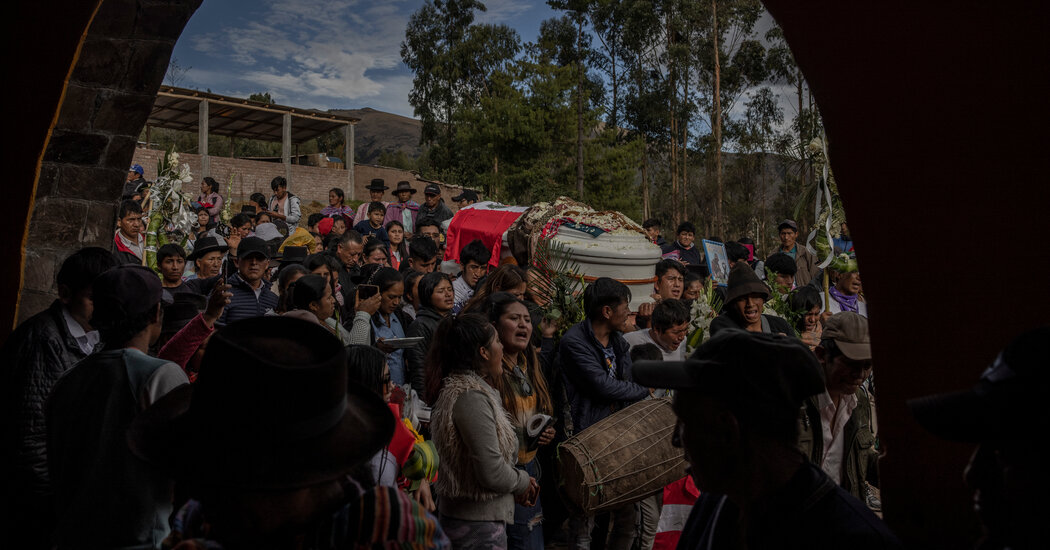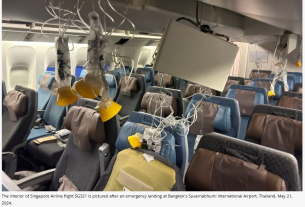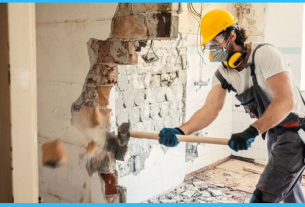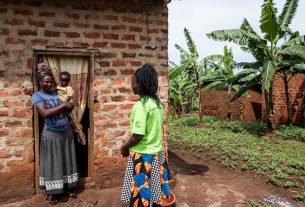AYACUCHO, Peru — Beyond the burning tires and roadblocks guarded by angry protesters, after the justice palace had been set on fire and the military had been sent to intervene, a funeral was underway.
In a white coffin draped in the flag of Peru, the body of Clemer Fabricio Rojas, 22, traveled down the road on Saturday in a crowd so thick it seemed to float. His mother wailed. And then, just as the coffin passed an intersection, a second one was borne down the cross street, this one holding the body of Christopher Michael Ramos, just 15.
“Justice!” the mourners shouted.
Peru is reeling from mass protest more than a week after Pedro Castillo, the country’s first leftist president in more than a generation, tried to dissolve Congress and rule by decree, setting off a dizzying drama that resulted in his arrest and the installment of his vice president as the new executive.
The protests, by supporters of Mr. Castillo, have led to confrontations with the police and the military that have left at least 25 dead, hundreds injured and a country deeply divided over the mandate of the new president, Dina Boluarte, a former ally of Mr. Castillo’s. Peru remains in a state of emergency, with many civil liberties suspended and the military and the police charged with enforcing a curfew in parts of the country.
In few places are the tensions more evident than in Ayacucho, an overwhelmingly poor, largely rural department far from the capital that on Thursday was the scene of a brutal encounter between protesters and the military. It left nine people dead, including Mr. Rojas and Mr. Ramos.
In an interview, the local head of the ombudsman’s office, David Pacheco-Villar, said that after a group headed toward the airport, probably in an attempt to use it as a seat of protest, soldiers responded with “disproportionate use of force,” launching an hours-long siege on the airport and surrounding neighborhoods.
Mr. Pacheco-Villar confirmed that at least two videos circulating on social media show soldiers pointing their weapons at body level, while at least one other video shows the military dropping what seem to be tear gas canisters from helicopters.
Other videos from the day show protesters throwing rocks and perhaps using slingshots. Mr. Pacheco-Villar said that he had not seen evidence that any civilians had guns but that the prosecutor’s office would investigate what happened Thursday.
The Ministry of Defense said in a statement that its soldiers in Ayacucho had been responding to an attack by a “mob” armed with “blunt objects, explosives and handmade firearms.”
Understand the Political Turmoil in Peru
A tumultuous moment. Peru has been convulsed in recent years by political turmoil, rapid turnovers of presidents and constant scandals. Now the ouster of President Pedro Castillo has led to an outburst of violence in the fragile South American democracy. Here’s what to know:
“The Joint Command of the Armed Forces deeply regrets the death of these people,” the statement said.
The protests in Peru reflect growing frustration across much of Latin America, a region rich in natural resources, where the wealth has often largely failed to flow to the poor.
Anger over poverty and inequality dates as far back as the colonial era but has burst to the fore in recent years — first after rising oil and metal prices filled government coffers but fell short of creating meaningful equity, and then more recently as the pandemic and inflation erased whatever gains had been made.
In recent years, major protests in Bolivia, Chile, Colombia and elsewhere have posed significant threats to stability.
Mr. Castillo, a farmer, teacher and union activist, won a democratic election for the presidency last year, though he had never held office, supported by rural Peruvians who had long felt excluded from the halls of power. Like many of the country’s politicians, his government was mired in corruption scandals from the start and hobbled by a political establishment also plagued by malfunction.
Facing a third attempt by Congress to impeach him this month, Mr. Castillo declared that he was disbanding Congress and creating a government that would rule by decree. The measures clearly fell outside the limits on presidential power in Peru’s Constitution. Mr. Castillo’s opponents, and even his own cabinet, declared them an attempted coup — and a clumsy one at that, given that he appeared to have rounded up no support for it.
But some of his supporters argued in interviews that Mr. Castillo had been manipulated into his actions by canny elites angling to wrest back power, and they began calling for him to be reinstalled.
Ayacucho is a 10-hour drive southeast from Lima into the mountains, to a landscape of bald hills and forests of prickly pear cactus. Its capital, called Ayacucho but known locally as Huamanga, has a colonial-era plaza and narrow streets. In 1824, the region was the site of a battle that ended the Spanish rule of Peru. Many of Ayacucho’s residents are Indigenous, with the older generation speaking Quechua first and Spanish second.
During the 1980s and 1990s, Ayacucho became a central battleground in Peru’s internal conflict that pitted a brutal Marxist group called the Shining Path against a sometimes equally violent government. Poor farmers, trapped in the middle, were often unjustly accused of being Shining Path collaborators.
At least 70,000 people across the country died in the violence, more than a third at the hands of armed forces, according to a truth commission.
Today in Ayacucho, deep distrust of the military and the central government continues, with many saying that anyone who dares protest is marked by the authorities as a “terruco” — a local slur for “terrorist.”
Mr. Pacheco-Villar, the head of the local ombudsman’s office, said that the protest on Thursday had begun peacefully in the city center, but that soldiers made a “grave error” when they tried to stop the march from entering the main plaza.
The group eventually entered the plaza, and around noon, some people decided to head to the airport, he said. There, the army asserts, soldiers were attacked and responded to defend themselves.
Mr. Pacheco-Villar, who lives blocks from the airport, said he had heard the sound of gunfire. Videos began circulating of wounded and dead people, and of others screaming in the streets for the soldiers to leave. Helicopters flew overhead. At least 61 people were hurt.
Mr. Rojas’s cousin, Mayra Condori, 23, was among the people at the airport on Thursday. “They were shooting at us at point blank,” she said. “They killed us in the most cowardly way.”
Amid the chaos, protesters have set fires in several local government buildings, while attacking other entities.
Mr. Rojas and Mr. Ramos both came from poor families in Quinua, a small town an hour from the department’s capital.
Mr. Rojas was studying mathematical physics at a public university. On Saturday, his friends and family carried his body through the main plaza in Ayacucho in a march led by his 14-year-old brother.
“He wasn’t a delinquent!” the crowd yelled. “He was a student!”
“Close the Congress!” they continued.
And then singling out the new president: “Dina! Assassin! The people reject you!”
Afterward, mourners drove to Quinua, where they filled a large white church for Mass.
Outside, as church bells clanged, boys with drums beat out a lament and women in traditional braids, skirts and black hats stood silently, tears rolling down their faces.
Mr. Ramos, 15, was among the youngest people to die in the protests. In Quinua, his sister, Analuz Ramos, 18, said she had been like a mother to him, caring for him while their parents worked.
Their mother sold food in the streets, while their father was a bricklayer.
“What I would suggest,” Ms. Ramos said, directing her comments to protesters “is that they keep fighting.”
After the Mass, a local orchestra played a song of mourning, marching with the two coffins and at least a thousand people through the streets.
Among them was Marleni Durán, 48, a mother of two children, who described life in the region as difficult. She said she woke at 4 a.m. to buy alfalfa, which she resells in a market, along with a traditional corn dessert. She finishes her day around 10 p.m.
For this, Ms. Durán brings home about $8 a day, she said, while a large canister of gas for cooking has risen in price to about double that.
Her sister, Luisa Quispe, 59, gestured toward the dead. “Here, you have justice if you have money.”
Finally, the coffins were carried to the archway of the cemetery, where they were held high, bounced and turned around, giving the two young men their final dance.
Then, the enormous crowd crossed under the arch, marching past the cemetery’s brick and concrete crypts, and Mr. Rojas’s family prepared to slide his body into its vault.
His mother, Nilda García, leaned over the open coffin, wailing in Quechua, “We will never see my son again!”
Soon, the coffin was closed, the flag of Peru removed and crumpled into a ball.
As the casket disappeared, Ms. García fell to the ground, while Mr. Rojas’s friends, overcome with anger and sorrow, began grasping at the crypt.
“My little Clemer!” Ms. García yelled. And then the boy drummers took up their beat again.
Mitra Taj contributed reporting from Lima, Peru.



